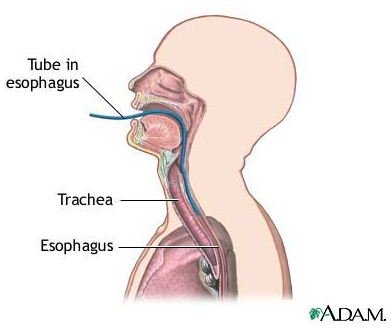Is Laparoscopic Surgery for Esophageal Cancer an Option for You?
Benefits of Laparoscopic Surgery
Laparoscopic surgery involves making small incisions at the site of surgery and inserting a laparoscopic camera through those sites to aide the surgeon in performing the surgery. This allows for shorter recovery time and hospital stay as well as less pain for the patient. It also allows patient’s to return to their normal daily activities faster and less scarring. Many conditions can be helped through this procedure. Laparoscopic surgery for esophageal cancer offers these same benefits to patients with this type of cancer. Traditional surgery usually results in a large incision, lengthy hospital stay and involves more recovery time.
Laparoscopic Procedures Offered for the Treatment of Esophageal Cancer
Typically surgery for esophageal cancer is an added modality after radiation or chemotherapy has been attempted or may be in conjunction with these treatments. The most invasive type of surgery is a esophagectomy which is the total removal of the esophagus. This procedure can be done laparoscopically and involves the removal of the entire or part of the esophagus. This is usually performed if the cancer is very active or when there is a strong chance of recurrence.
A second type of laparoscopic surgery is used to stage cancer cells of the esophagus. This type of surgery is called a Thoracoscope. This procedure allows the surgeons to sample the cells of the esophagus to more accurately stage esophageal carcinoma and decide on a course of treatment.
Risks Associated with Laparoscopic Surgery
Of course with any surgery there are risks, this is also true with laparoscopic surgery. The risks are decreased with this type of surgery but they do still exist even though complications are rare. There is the risk of anesthetic complications. Patient’s may have increased breathing problems or even death (although this is very rare). There is also a risk of infection. Any open wound runs the risk of infection. Laparoscopic incisions are very small so the risk of infection is small, but it is still present. Perforation of organs is a risk as well. Though the laparoscopic tools are precise and what the camera sees is projected onto a monitor, accidents can happen. Again, the risk of this happening with laparoscopic surgery is very small due to the precision of the instruments and view with the camera but none the less, is still a risk. If another organ is accidentally nicked it can result in more surgery to repair the damage.
Conclusion
The incidence of esophageal surgery has increased over the past twenty years. Treatment of this cancer usually involves some type of surgery and chemo or radiation therapy. Laparoscopic procedures can be used to remove all or part of the esophagus to prevent recurrence or if the cancer is very active. The procedure can also be used to allow the physician to remove tissue to stage the cancer to determine the best course of treatment.
The benefits of laparoscopic surgery are decreased hospital stays, decreased size of incision and allowing the patient to return to their normal daily activities, such as work, quicker than traditional surgery. It also usually involves less pain and less risk than traditional surgery.
The risks involved with laparoscopic are anesthetic complications, infection and perforation of other organs but are very small.
SOURCES:
IMAGE: www.publicdomainimages.com
